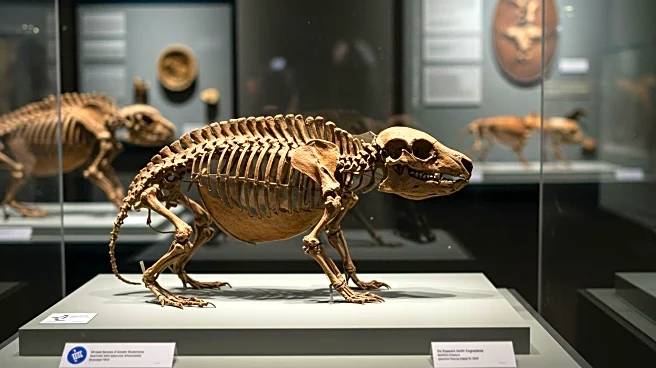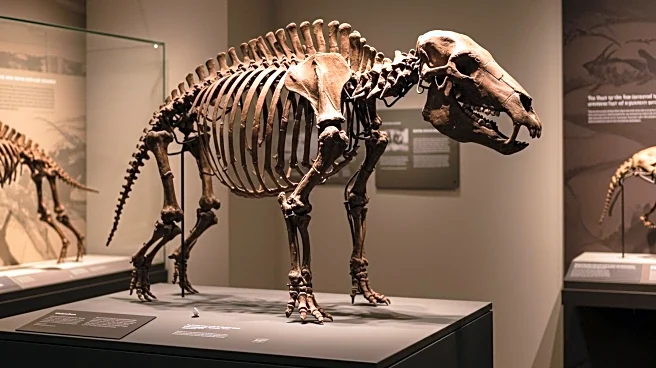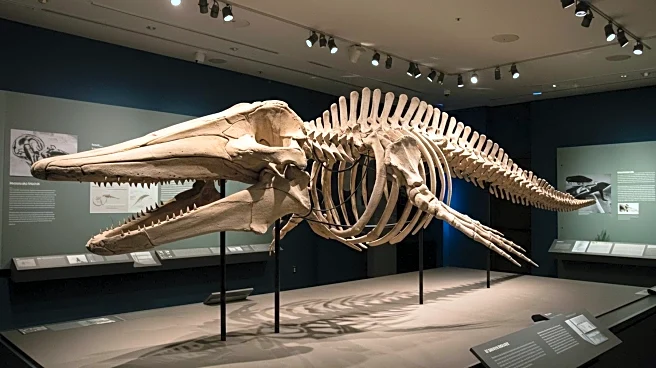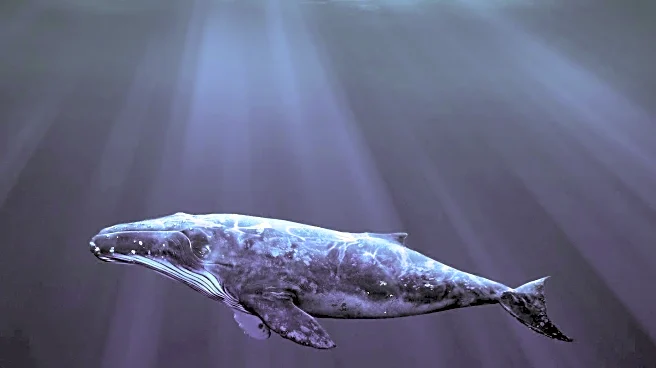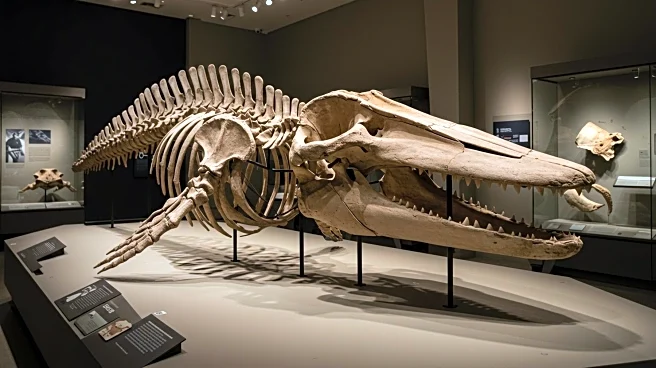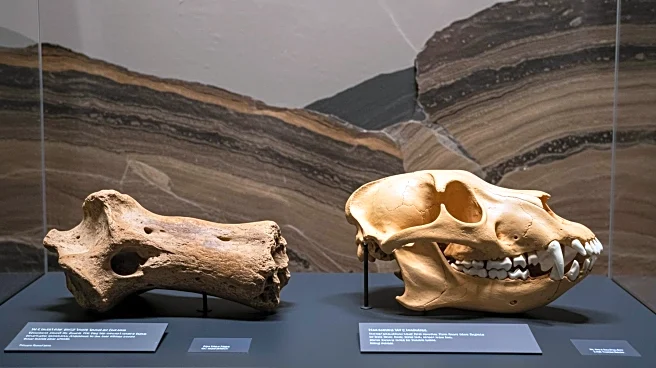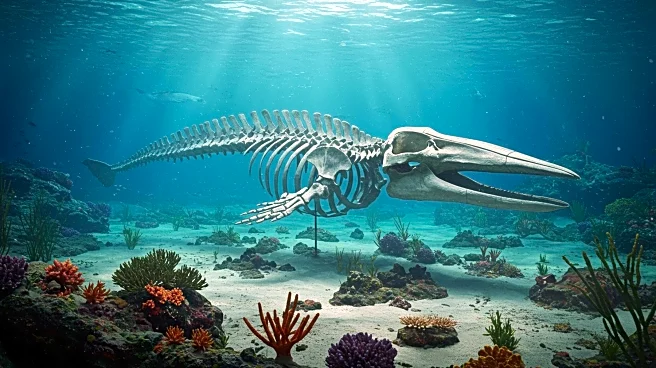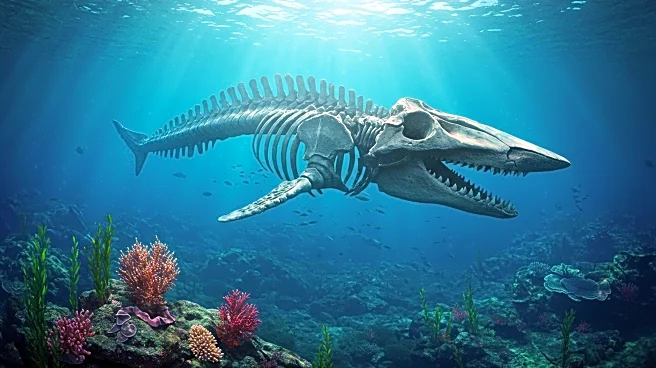What is the story about?
What's Happening?
Scientists from the University of Chile have announced the discovery of a fossil belonging to a mouse-sized mammal, Yeutherium pressor, which lived approximately 74 million years ago. The fossil was found at the Rio de Las Chinas Valley archeological site and includes parts of the skull, specifically the maxilla with a small molar and roots of two other molars. This discovery marks the third mammal species from the Age of Dinosaurs found in Chile, providing significant insights into mammalian evolution during the Upper Cretaceous period, just before the asteroid event that led to the extinction of dinosaurs.
Why It's Important?
The discovery of Yeutherium pressor is crucial for understanding the evolutionary history of mammals, particularly during the Upper Cretaceous period. This period is significant as it precedes the mass extinction event that wiped out the dinosaurs, allowing mammals to diversify and evolve. The findings contribute to the broader scientific understanding of how mammals adapted and evolved in prehistoric ecosystems. Such discoveries can inform current evolutionary biology and paleontology, offering a glimpse into the adaptive strategies that may have influenced modern mammalian species.
What's Next?
Researchers at the University of Chile plan to continue their work at the Rio de Las Chinas Valley site, hoping to uncover more fossils that could further illuminate the evolutionary pathways of ancient mammals. Continued excavation and analysis may lead to additional discoveries that could refine or expand current scientific theories about mammalian evolution during the Age of Dinosaurs. The ongoing research efforts underscore the importance of paleontological sites in Chile and their potential to yield valuable scientific insights.
Beyond the Headlines
The discovery of ancient mammal fossils in Chile highlights the country's role as a significant site for paleontological research. It also raises questions about the ecological dynamics of prehistoric times, including interspecies interactions and environmental conditions that shaped evolutionary paths. The ethical considerations of preserving such sites for future research are also pertinent, ensuring that these natural archives remain accessible for scientific study.
AI Generated Content
Do you find this article useful?


